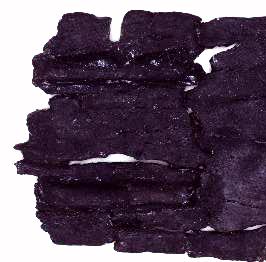
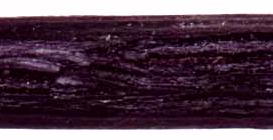
To the left: Fragment of wood from the Iron Age. Conserved with glycerin in about 1947. To the right: Iron Age arrow, conserved with glycerin in about 1939
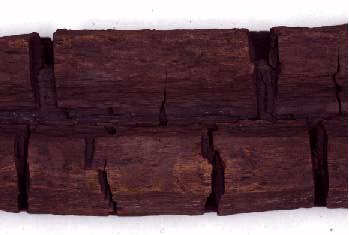
Wood is stabilized by replacing the water with impregnants that also add strength to the decayed wood. The aim is to preserve both the shape and the surface detail. It has, however, proved difficult to find preservative materials that do not themselves destroy the wood in the long run.
This article describes the search for the perfect preservative, based on the conservation processes used in the National Museum over the past hundred and fifty years.
One of the earliest methods used in Denmark for conserving wood was
to impregnate the wood with a mixture of petroleum and a drying oil, preferably
linseed oil, while the wood was allowed to dry slowly. Linseed oil does
not penetrate well and it breaks down in time, so that the surface of the
wood becomes sticky and dark.
Impregnation with glycerin was another early method, used from 1900.
It was used either pure or in combination with other materials. Glycerin
is a water like molecule which easily replaces the water in the wood but
evaporates extremely slowly. Air does not enter the wood, so the shrinkage
which is caused by the surface tension at the interface between air and
water does not occur.
Glycerin absorbs and releases moisture as the atmospheric humidity
changes. It gives the object a wet and sticky appearance. It does not strengthen
the wood and therefore gives inadequate protection against collapse.


To the left: Fragment of wood from the Iron Age. Conserved with
glycerin in about 1947. To the right: Iron Age arrow, conserved with glycerin
in about 1939
A new method of wood conservation with alum was published by C.F.Herbst in the Antiqvarisk Tidsskrift of 1861. It became the National Museum's standard treatment for waterlogged wood for the next hundred years.
The principle of the process is that alum (potassium aluminium sulphate with water of crystallisation) is a solid crystalline substance at room temperature but when heated it dissolves in its own crystal water. The potassium, aluminium and sulphate ions will diffuse into wood that is immersed in the warm solution, eventually acquiring the same ratio of ions to water as in the crystalline solid. When the wood is cooled again, alum recrystallises, incorporating all the water in its own crystals, whose bulk prevents the wood from shrinking. The process was completed by brushing the object with warm linseed oil and finally with a thin coat of shellac. This was to prevent absorption of water from damp surroundings.
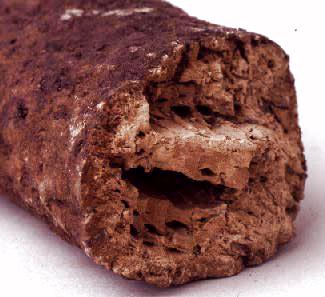
This little piece comes from the alum-conserved Dejbjerg wagon.
The wagon was conserved in 1883. The broken surface reveals that the alum
has not penetrated very far, so that the wood in the centre has collapsed

A model showing the probable shape of the Hjortspring boat, found
on the island of Als in southern Denmark and dated to about 300BC.
The alum conservation method was changed in the 1920's: glycerin was added to the impregnating solution. This process was used on the Hjortspring boat, first conserved in the period 1921 - 1924. The impregnation bath was one part of water, one of glycerin and 4 parts alum, at 92 degrees C.
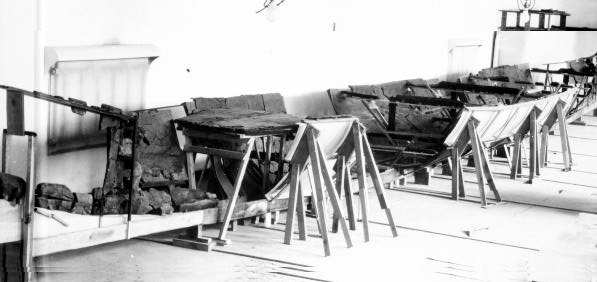
As a result of Conservator Rosenberg's
thorough measurements during the excavation, the many thousand pieces of
the boat could be re-assembled and exhibited in the cellar of the National
Museum at the end of the 1920's.
The mixture of glycerin and alum is an unfortunate combination: it is very hygroscopic, that is it takes up moisture from the air. The boat was exhibited in a cellar with an unstable climate. The wood began to powder because of recrystallisation of alum.